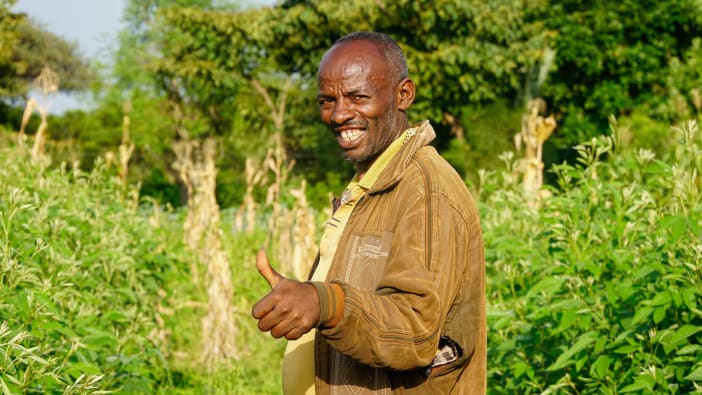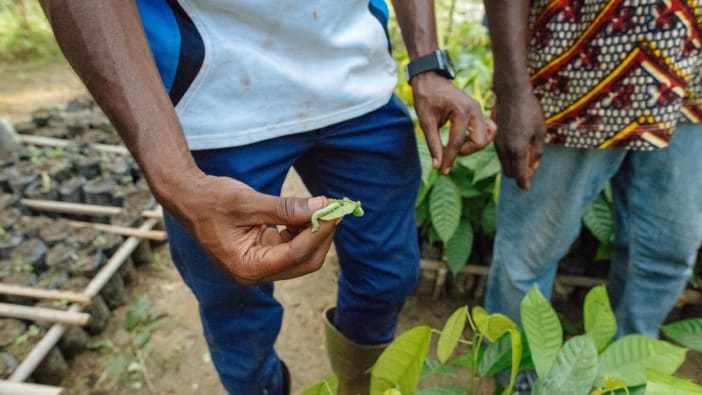Almost everyone likes trees. They bring lots of benefits and are pleasant to have around. However, spending time and effort on them often seems less important than growing food, finding clean water or helping to build a new school classroom.
Trees also take a long time to grow. Five years may pass before the extra firewood, fodder or building poles become available from a new planting. There are two keys to this problem. One is to share the burden of waiting by involving the whole community. The second is to combine tree-growing with food-growing, an approach known as “agroforestry”. This article looks at the first approach – how to get people interested, and then committed, to a tree project.
Their Need
When asked, villagers will certainly say that trees are needed and will list many of their benefits. But planting more trees is rarely seen as the urgent need for this month or this wet season. Other things always take priority. This can be helped by showing the link between tree-growing and food-growing…
- Trees help to prevent soil washing, or blowing, away
- They provide foliage for livestock to eat or to use as a mulch for vegetables.
- They may enrich the soil.
- Fruit trees bring direct benefits.
Make these points in village meetings, using visual aids or even puppet shows (this has been very successful in the Nile province of Sudan) to raise awareness. Keep people’s interest by asking this question: “How would you like your village and surroundings to be in ten years time?”
This helps the villager to think beyond the immediate, very pressing, day-to-day needs. The question sows the seeds of vision for the future, as it says in Proverbs 29:18: “Where there is no vision, the people perish”. This is particularly important in long-term forestry projects.
Their Request
The next step is for the villagers to request help with tree-planting projects. Sometimes this can be helped by successful demonstrations. In Ethiopia in 1980, successful tree-planting by the Kale Heywet Church, encouraged local Kabele leaders to enquire about a forestry project on their own ground. Out of this, the Bilate project has grown and now covers many hundreds of hectares. Nothing succeeds like success, and good demonstration plots can stimulate enquiries and interest. At Bilate, the project’s own success has led to neighbouring Kabales wanting to participate. Today, eight are involved and there is now woodland running some 30km along the Bilate river, where before there was none.
There have been many visitors to Bilate and they have been very impressed. The villagers feel proud of their achievements and this further encourages others to copy and join in.
Their Land
Trees often appear to compete with land for food growing, but this is not necessarily true. Trees will grow on poor land unfit for farming; they can be planted at field corners, beside roads and in compounds.
At Bilate, there was concern that a forestry project would reduce the amount of land available for rough grazing by livestock. So the villagers themselves decided exactly where the project boundary would be and exactly which land would be set aside. They also agreed where access through the project to the river, would be kept clear, to allow watering of their animals. In fact, they have even provided herdsmen to guard the project’s boundary against their own cattle.
Their Work
Involvement with a project needs a long-term commitment in terms of labour. Initially, this commitment can be encouraged by giving different people responsibility for planting and maintaining certain plots of trees. As people see poor and denuded land being brought back to life again, their commitment to the long-term labour needed is likely to increase.
Trees need looking after - as they are cared for, appreciation of them, and their value, increases.
Their Benefits
The final ingredient for successful community-based forestry is for the benefits to come back directly to the people themselves. All doubts about land tenure, whose the produce is, how it is going to be shared out, must be settled early in the project. These are often just the matters a village committee can sort out.
As early as possible in the life of the project, some produce, such as grass for thatching, or prunings from young trees for firewood, should be obtained by the villagers for their use. This will set the pattern for the future and establish clearly that the new woodland belongs to them. Many a project has failed after much initial enthusiasm, when there has been a hint that the people whose labour has created it are not going to reap the main rewards.
A Hoped-for Result
Isaiah (55:13) plainly describes the turning of poor, rough, ground to productive woodland as a way of honouring God. The Government’s inspection of the project at Bilate this year (1990) describes it as “the best model of sound ecological improvement for the surrounding areas”. Such are the results of the local church’s willingness to get involved almost ten years ago, and still to be involved today.
Dr Julian Evans works for the UK Forestry Commission and is Tear Fund’s Forestry Consultant. He is author of “Plantation Forestry in the Tropics” (reviewed Resources page).









